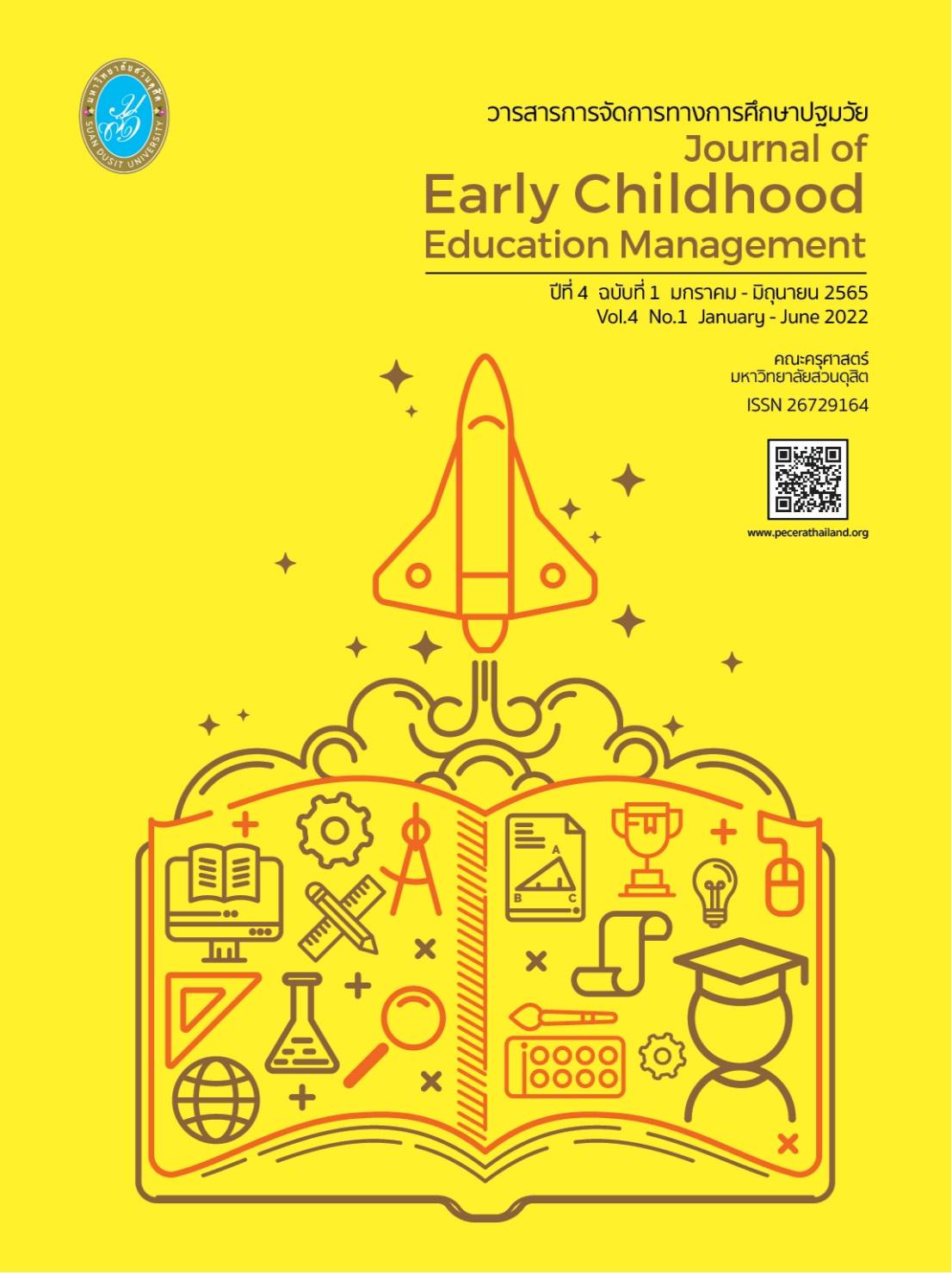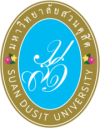Development of English-language Use and Learning through Integrated Interactive Media for Young Learners with Special Needs
คำสำคัญ:
English language teaching, integrated instructional materials, special educationบทคัดย่อ
This study investigated the development of English-language use and learning among 15 young learners with special needs, by integrating some interactive media into instruction of reading and speaking. This study aimed to 1) find out the methods to help these young learners build up their understanding of English-language use and learning, with the help of some media such as pictures, actions, sounds, moving pictures and interactive media as part of the teaching materials, 2) compare and contrast the development of the learners’ understanding of the language use and learning, and 3) apply the research findings with instruction of English in other situations or of other languages. The research instruments comprised the ones used for teaching English and the ones used for collecting data.
The teaching instruments were formed with integration of various kinds of media, like pictures, actions, sounds, moving pictures and interactive media. The instruments for data-collection were observations, pre-tests and post-tests, and follow-up interviews with open-ended questions. The quantitative data collected from the pre-tests and the post-tests were analysed with Wilcoxson Signed Ranks Test Statistics; whereas the qualitative data collected from the classroom observations and follow-up interviews were analysed and cross-checked with the quantitative data. This study revealed the following interesting findings. First, the integration of pictures, actions, sounds, moving pictures and interactive media into classroom instruction, as a whole, could develop these learners’ use and learning English, in terms of grammar/language structure, meaning and comprehension. Second, the development of language use and learning in the area of language structures resulted from the integration of pictures and actions and of moving pictures and interactive media. Third, the learners’ development of language use and learning in terms of meaning was derived from the integration of pictures, pictures and actions, actions and sounds, and moving pictures and interactive media. Fourth, the learners’ development of language use and learning in terms of overall comprehension resulted from the integration of pictures and moving pictures and interactive media.
เอกสารอ้างอิง
Bassey, M. (2005). Three paradigms of educational research. In: A. Pollard, ed. Readings for reflective teaching. London: Continuum.
Bogdan, R.C. and S.K. Biklen. (2003). Qualitative research for education: An introduction to theories and methods. London: Pearson Education Group.
Brill, M.F. (2011). “Teaching the special needs learners: When words are not enough.” Journal of Extension [online], 49(5), Retrieved from http://www.joe.org/joe/ 2011october/tt4.php.
Cameron, L. (2001). Teaching languages to young learners. Cambridge: Cambridge University Press.
Citizen Information Board. (2015). Special Needs Education. Retrieved from: http://www.citizensinformation.ie/en/education/the_irish_education_system/special_education.html.
Ellis, R. (2003). Task-based language learning and teaching. Oxford: Oxford University Press.
Foster, P. (2006). Observational research. In: R. Sapsford, and V. Jupp, eds. Data collection and analysis. London: Sage.
Kaur, A., Young D., & Kirkpatrick. (2018). English Education Policy in Thailand: Why the Poor Results?. Retrieved from: https://www.researchgate.net/publication/286925009_ English_Education_Policy_in_Thailand_Why_the_Poor_Results.
Kumar, R. (2005). Research methodology: A step-by-step guide for beginners. London: SAGE.
Lantolf, J.P. and S.L. Thorne. (2007). Sociocultural theory and second language learning. In: B. VanPatten and J. Williams, eds. Theories in second language acquisition: An introduction. Mahwah, New Jersey: Lawrence Erlbaum Associates.
McCafferty, S.G. and M.K. Ahmed. (2001). The appropriation of gestures of the abstract by L2 learners. In: J.P. Lantolf, ed. Sociocultural theory and second language learning. Oxford: Oxford University Press.
Mertens, D.M. (1998). Research methods in education and psychology: Integrating diversity with quantitative & qualitative approaches. London: SAGE.
Sattayanurak, A. (2010). Why and How to Reform Language Instruction (การปฏิรูปการสอนภาษาทำไมและอย่างไร). Retrieved from http://www.moe.go.th/moe/th/news/detail.php? NewsID=20996&Key=hotnews
Siegler, R.S. (1986). Children’s thinking. Englewood, New Jersey: Prentice-Hall.
Thai PBS. (2015). Thailand Ranks near Bottom of English Proficiency Index. Retrieved from: http://englishnews.thaipbs.or.th/thailand-ranks-near-bottom-of-english-proficiency-index/.
ดาวน์โหลด
เผยแพร่แล้ว
รูปแบบการอ้างอิง
ฉบับ
ประเภทบทความ
สัญญาอนุญาต
ลิขสิทธิ์ (c) 2023 วารสารการจัดการทางการศึกษาปฐมวัย

อนุญาตภายใต้เงื่อนไข Creative Commons Attribution-NonCommercial-NoDerivatives 4.0 International License.
ลิขสิทธิ์ต้นฉบับที่ได้รับการตีพิมพ์ในวารสารการจัดการทางการศึกษาปฐมวัย ถือเป็นกรรมสิทธิ์ของคณะครุศาสตร์ มหาวิทยาลัยสวนดุสิต ห้ามผู้ใดนำข้อความทั้งหมดหรือบางส่วนไปพิมพ์ซ้ำ เว้นแต่จะได้รับอนุญาตอย่างเป็นลายลักษณ์อักษรจากคณะครุศาสตร์ มหาวิทยาลัยสวนดุสิต นอกจากนี้ เนื้อหาที่ปรากฎในบทความเป็นความรับผิดชอบของผู้เขียน ทั้งนี้ไม่รวมความผิดพลาดอันเกิดจากเทคนิคการพิมพ์




